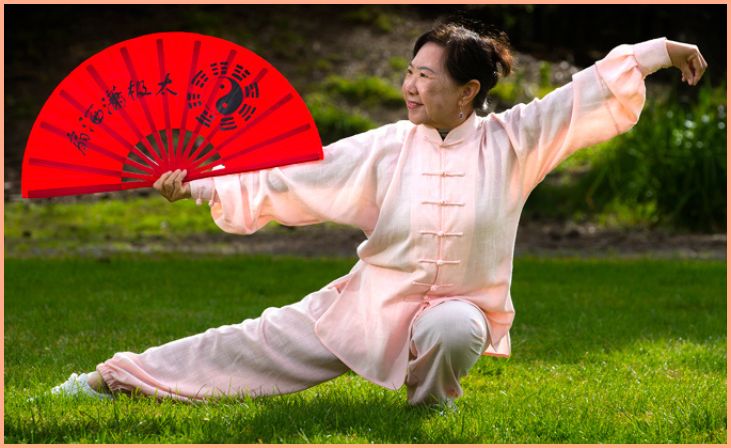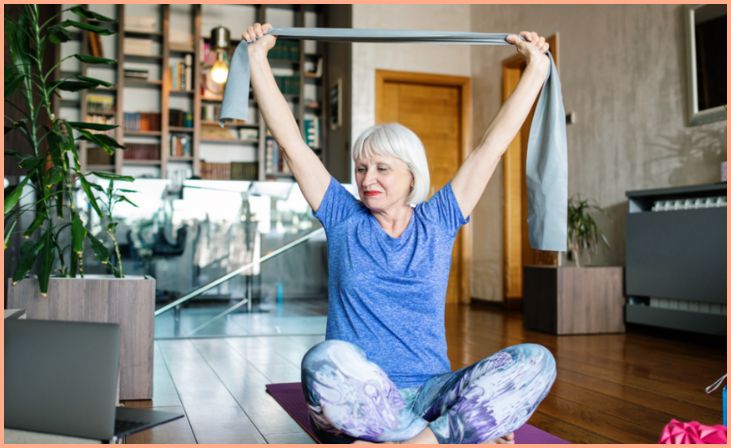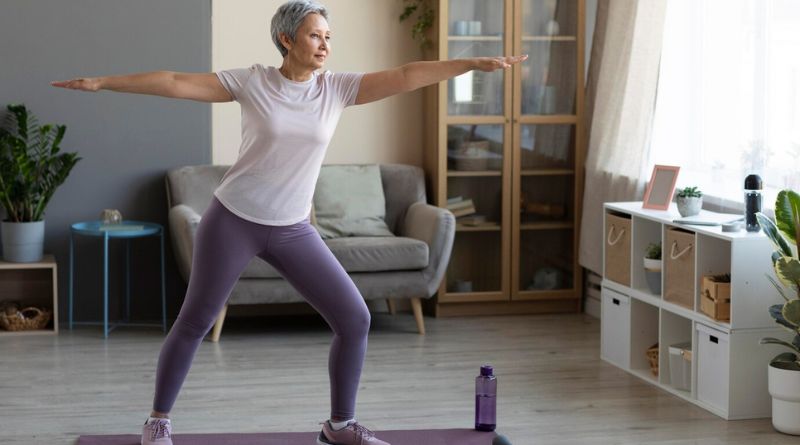Are you in your golden years and aiming to not only maintain your strength but also enhance your balance? If so, you’ve come to the right place. In this comprehensive guide, we will delve into a carefully curated selection of 10 highly effective balance exercises, specially tailored for seniors like you. Whether you’re a retiree enjoying the well-deserved fruits of your labor, a proud and active grandparent, or simply someone who places a high value on stability and well-being in your senior years, these exercises are your trusted companions on the journey to staying steady and strong.
10 Balance Exercises For Seniors: Stay Steady And Strong
Maintaining balance is a journey, and these exercises will be your trusty companions. Practice them regularly, and you’ll notice improvements in your stability and strength. Keep in mind that consistency is key to reaping the full benefits of these exercises.
Tai Chi for Harmony:

Tai Chi is a graceful and centuries-old practice that marries flowing movements with deep, mindful breathing. For seniors, it’s a gem of an exercise. It not only enhances balance but also improves flexibility and mental clarity. The slow, deliberate movements of Tai Chi promote a sense of harmony within your body and mind. It’s like a gentle dance that cultivates stability and helps you stay centered.
Also Read:- 7 Doctor-Approved Low-Sugar Foods to Include in Your Weight Loss Journey
One-Leg Stand:
This exercise may sound simple, but it’s incredibly effective. It involves standing on one leg while using a sturdy surface, like a chair or a countertop, for balance support. By doing this, you’re not only strengthening your leg muscles but also enhancing your overall stability. Over time, you’ll find that your balance and leg strength have greatly improved, making everyday activities more manageable.
Heel-To-Toe Walk:
This exercise is a balance booster and a great way to fine-tune your coordination. It’s like a walking sobriety test where you walk heel to toe in a straight line. This movement replicates the precision needed for balancing and enhances coordination, making it easier to navigate daily tasks with grace.
Yoga for Balance:
Yoga is a treasure trove of balance-enhancing poses. Whether you’re trying the tree pose or the warrior III pose, you’re strengthening your core and increasing your stability. These poses require concentration and mindfulness, promoting not just physical balance but also mental clarity. The holistic benefits of yoga are well-known, making it a wonderful choice for seniors.
Resistance Band Exercises:

Resistance bands are versatile tools for seniors seeking to strengthen their legs and improve their balance. These bands offer gentle resistance, which is particularly beneficial if you’re easing into exercise or have joint concerns. They can be used for a wide range of exercises, helping you target different muscle groups and enhance your overall balance.
Sit-to-Stand:
This exercise is all about building leg strength and enhancing balance. It’s simple yet effective – sit on a chair and then stand up without using your hands for support. This movement challenges your leg muscles and helps you regain the strength needed for daily activities. It’s a powerful way to boost both physical and functional balance.
Balance Ball Exercises:
Incorporating a balance ball into your routine can be a game-changer. It offers various exercises that challenge your stability and core strength. The instability of the ball forces your body to engage various muscles, promoting balance, and increasing your core strength. It’s a fun way to work on your equilibrium.
Leg Swings:
Stand beside a sturdy support, like a wall or a chair, and swing one leg forward and backward. This seemingly simple action does wonders for your balance and flexibility. The controlled leg swings improve your hip stability, enhancing your ability to maintain balance during various activities.
Toe Taps:
Standing with your feet hip-width apart, tap your toes out to the sides. This exercise targets hip stability and balance. By performing toe taps regularly, you’ll find it easier to maintain equilibrium during activities that involve lateral movements.
Water Aerobics:

Water aerobics is a fantastic choice for seniors as it’s gentle on the joints while being highly effective for improving balance. You’ll find water aerobics classes readily available at senior centers and gyms. The buoyancy of the water reduces the impact on your joints, making it an ideal environment for balance training. The resistance of the water challenges your muscles and enhances your overall stability.
5 Exercises To Avoid Over 60
While exercise is vital for maintaining good health, there are certain exercises that individuals over the age of 60 should approach with caution or avoid altogether. Here are five exercises to be mindful of:
High-Impact Aerobics:

High-impact aerobics, such as jumping or running, can be tough on the joints and bones, which become more susceptible to injury as we age. Over 60, it’s best to opt for low-impact alternatives like brisk walking or swimming, which provide cardiovascular benefits without the added stress on the body.
Heavy Weightlifting:
While strength training is essential, heavy weightlifting can strain muscles, joints, and ligaments. Overexertion with heavy weights can lead to injury. Seniors should focus on lighter weights and higher repetitions to build strength safely.
Extreme Flexibility Exercises:
Attempting extreme flexibility exercises, like extreme backbends or splits, can put excessive strain on the ligaments and tendons. Instead, seniors can benefit from gentle stretching routines that improve flexibility without risking injury.
Exercises With Poor Form:

Exercises done with poor form or incorrect technique can lead to injury. It’s crucial for individuals over 60 to ensure they are using proper form during their workouts. Consider working with a trainer or physical therapist to learn correct techniques.
Also Read:- Top 5 Fiber-Rich Grains for Effective Weight Loss
Exercises That Aggravate Existing Conditions:
If you have pre-existing medical conditions or injuries, it’s essential to avoid exercises that exacerbate those issues. For example, if you have a knee injury, high-impact exercises or deep squats may not be suitable. Always consult with a healthcare professional for guidance on exercise modifications that consider your specific health needs.
Conclusion
As a senior, maintaining your balance is a vital aspect of healthy aging. These 10 balance exercises for seniors are not only effective but also enjoyable to practice. By incorporating them into your routine, you can stay steady and strong, enhancing your quality of life. Remember, it’s never too late to improve your balance and overall well-being.
FAQs
A: Aim for at least 3-4 times a week to see noticeable improvements in your balance.
A: Yes, most of these exercises can be done in the comfort of your home. Ensure a safe and clutter-free space.







